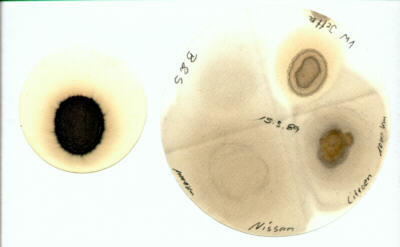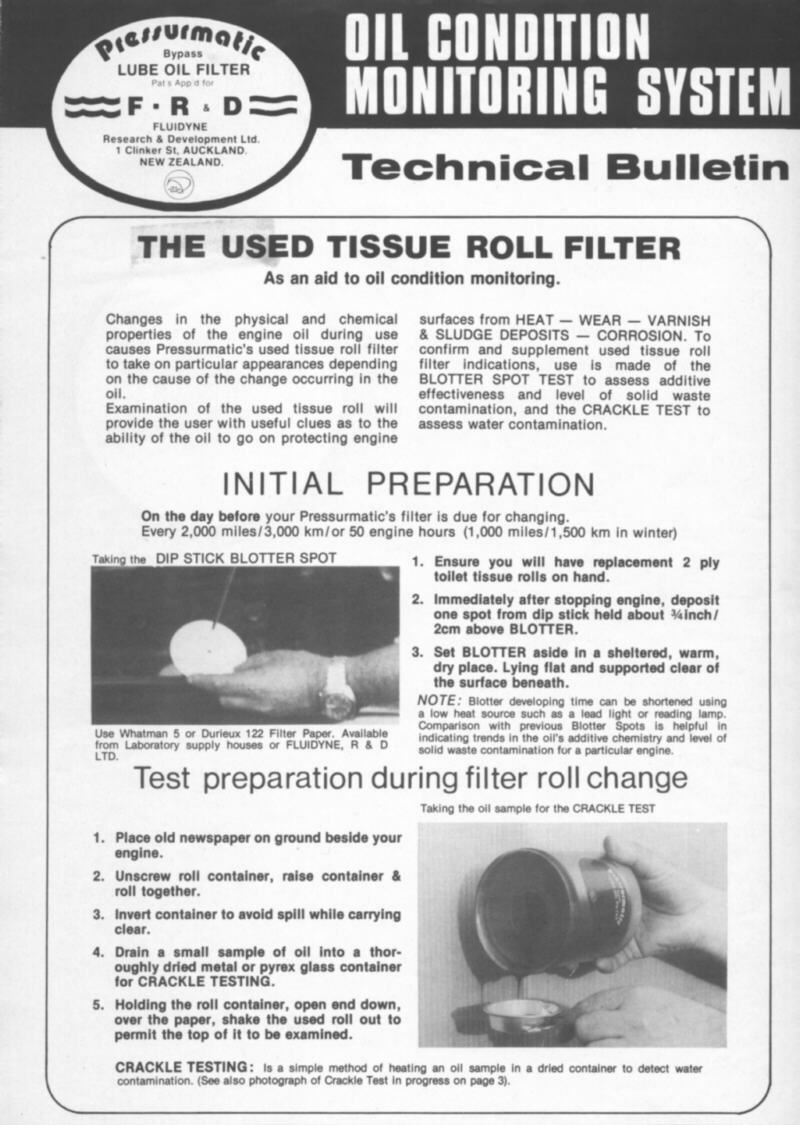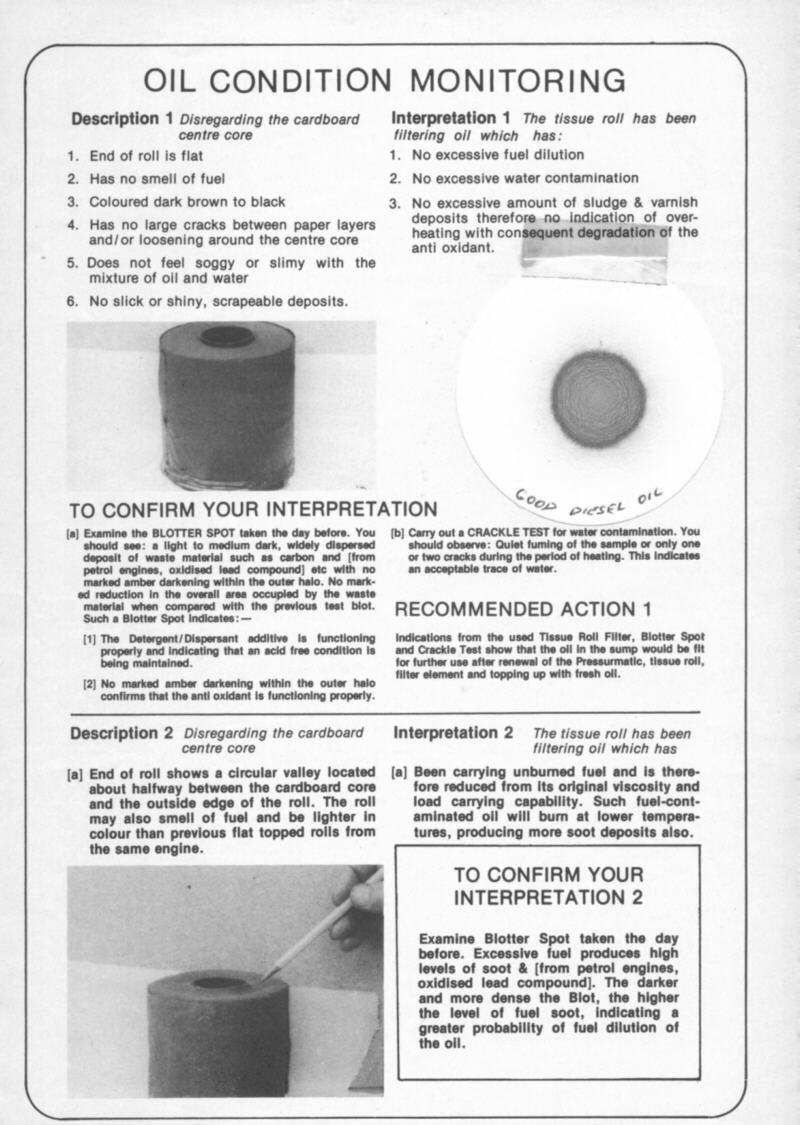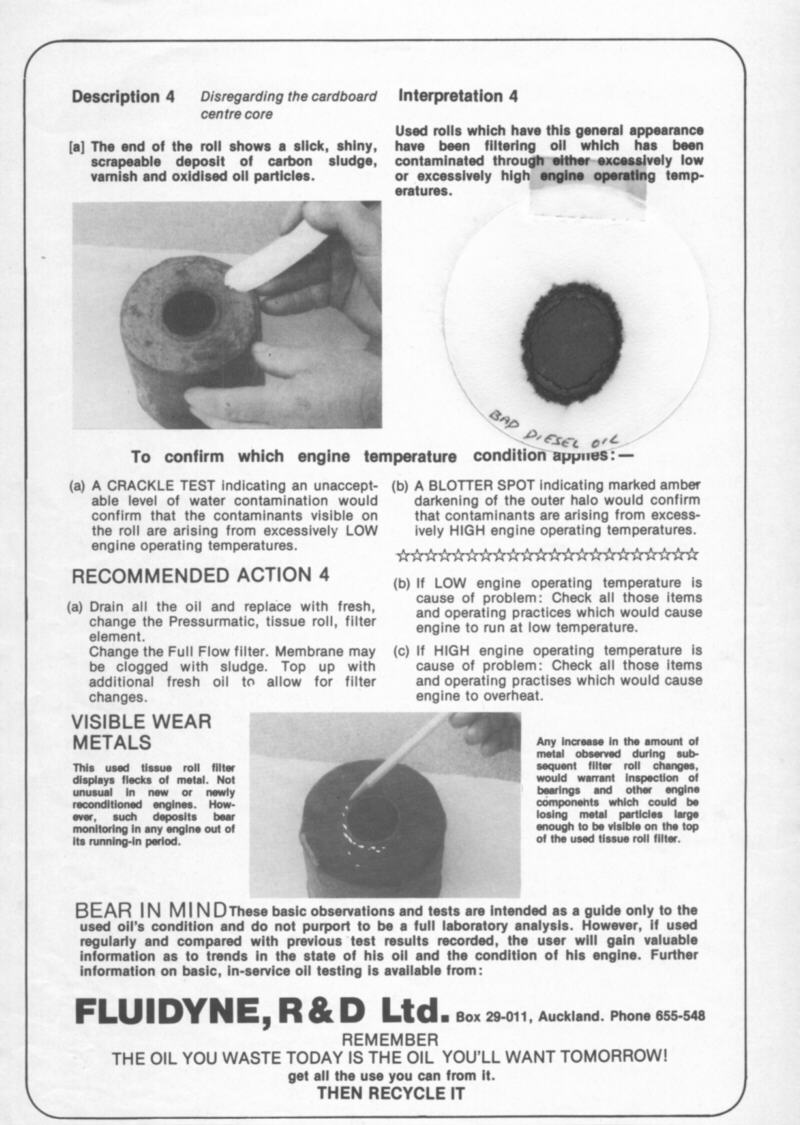|
|
Producer Gas Engine Oil and Soot
Dear Colleagues
As this subject is relevant and of interest to readers of this list, I dug into the Fluidyne files for the following contribution.
From 1973 – 1983, Fluidyne manufactured By-Pass Engine Filters, the purpose of which was to control the contaminating factors in oil, extending oil life as well as the engine.
There is little appreciation of the fact that 2/3 of all engine wear is not wear, but acid erosion, which forms when moisture released by the combustion cycle enters the oil by ring blow-by etc.
Because distance, time, or even filters have little relevance to the actual condition of the oil, it was necessary to establish the go – no go parameters of the oil in the engine.
Fluidyne drew on existing oil company laboratory procedures for pre testing oil before the expensive metal tests, called Blotter Spots, refining it for basic tests in the field.
I introduced Blotter Spot testing to the international gasification engine expertise in Bremen in 1989, and the Beijer Institute in Sweden circulated an updated version in the old Producer Gas Round Table Newsletter. Some of the Indian researchers have found it useful. Basically we have to worry about three things in the oil when we use producer gas in the engine. Water, which forms acid and kills the pH of the detergent dispersant (which eats the engine) and the insolubles which thicken the oil.
Insolubles can come in a number of different forms, but we will worry about those caused by overheating and soot. As our engines are so derated on clean gas and can never be overloaded, overheating of the oil can only come from lack of cooling or combustion temperatures.
When tar or pyrolysis oil is ingested, power output increases dramatically, as does exhaust temperatures with burning gas exiting the engine. Engines with tar in the gas always have engine oil problems causing oxidation that thickens the oil. Oxidation products are asphalt and resins.
Blotter Spots of this condition will show a very dense blot with a brown or orange halo, and the oil will have a very acrid smell. Dump the oil! The anti oxidation additive also has another role to play, that of extreme boundary lubricant. Heat kills the ability of the organic metal skin (a type of zink phosphate) to keep the metal surfaces apart at high pressure points, and they start tearing off metal finally seizing.
Soot on the other hand will be just a dense blot of varying density. It usually has just a wet halo.
In our situation we need to know if there is too much soot or carbon in the oil, and this is determined by holding the paper up to the light and passing your finger behind it. If you see the shadow of your finger through the blot, then the insolubles are below the maximum allowable, but if you cannot see the shadow, dump the oil. Its too thick!
The maximum amount of moisture allowed in oil is invisible and you haven't got white scum or milk in the sump, but its easy to test.
You can use almost anything you can heat quickly with a lighter or candle (tin lid, glass tube, aluminium foil). Warm it first to dry anything of the test surface and place a few drops on it, heat and listen closely. If it pops and crackles, too much water – dump the oil. Hence the name Crackle Test.
The Blotter Spot also shows water as sharp feathered peaks radiating out through the halo.
Graeme has set up another file in the Fluidyne archive www.fluidynenz.250x.com showing our old brochure and a few blots for you to guess the conditions (No prizes).
Soot by the way that flocculates after the grate, have nothing to do with char levels, temperature, or tar cracking. It is caused by the gas temperature exceeding 500 degrees C and it reverts back into CO2 and soot. Tar will condense on it if you have tar in the gas. It is vital to quench the temperature before you pipe it or squeeze it through filters and cyclones etc. This was a problem of our early gasifiers which disappeared after we increased the gas outlet size to overcome the heat stress on the connection.
Regards
Doug Williams
Fluidyne Gasification.

|
Click for a larger version |
 |
|
 |
|
 |
|
 |
|